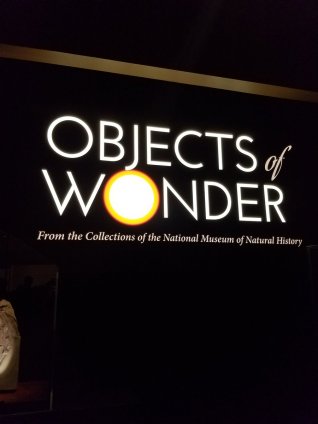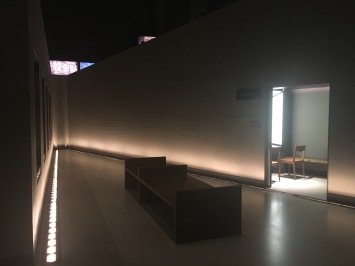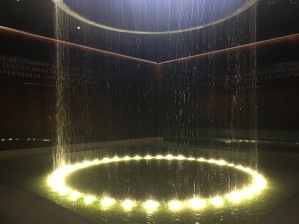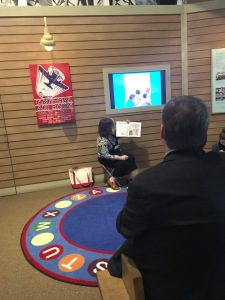delight + insight = a powerful, memorable experience
One common thread between almost all of the museums that we have visited within the last two weeks is that things always need to be changing– whether that is for the betterment of the institution, to encourage visitors to come back, or simply just because times change. This probably most obvious in the International Spy Museum, which is almost at the end of a long road to build a new museum.
Their organizational touch point for the new project, seen above, was to create both delight and insight for the visitor so that they have a powerful and memorable experience. It was clear from the explanation that each portion of the new Spy museum, so far, has been carefully laid out to achieve these feelings, from the inclusion of topics beyond espionage, to encouraging exploration, to insuring that everyone has an “entry point” that appeals to them, each aspect was planned to create a balanced equation between fun and learning.
The “equation,” if you will, truly resonated with me though because it fits into all of the conversations about storytelling that museums have told us about– just as they have all discussed change in some form. NMAAHC balanced delight and insight by making a powerful learning experience in their History Galleries and a fun environment in the upstairs galleries. NMNH used their target audience as the balance point in exhibitions. The National Air and Space Museum is starting to use technology as a entry point into learning while making it more engaging and fun. The list goes on….

….Until we reach our seminar program itself. We gained so much insight from this two week program that I feel as if I am a bit saturated with museum-related information (in a good way… if that makes sense), and being allowed to see first hand what so many museum professionals are talking about– both front of house, and behind the scenes– was a delight to my inner museum nerd. The trip was a wonderful, if exhausting, experience and I can’t wait to go back to my own museum and share everything that I learned!














 The story that Ann shared with us, that they use in their “Flights of Fancy Storytime” programs, talked about Bessie Coleman, an African American woman who had to overcome many challenges to reach her dream of flying. Overcoming obstacles and learning to dream are two big storylines that I have noticed in books about famous Americans for this young age group and this story presented it in a way that was accessible and fun for children without getting too deep into ideas like racism and sexism, that were clearly present. I found it interesting that Ann said that she did a little editing of the story, to cut out a part of the book where Bessie’s death was discussed, but that in the long run the editing wasn’t out of disrespect to the author but rather respect to the visitor– most parents don’t expect an outing at an Air and Space museum to turn into a conversation about death, and Ann recognized that that one page in the book would overwhelm any other lesson that she was trying to get across.
The story that Ann shared with us, that they use in their “Flights of Fancy Storytime” programs, talked about Bessie Coleman, an African American woman who had to overcome many challenges to reach her dream of flying. Overcoming obstacles and learning to dream are two big storylines that I have noticed in books about famous Americans for this young age group and this story presented it in a way that was accessible and fun for children without getting too deep into ideas like racism and sexism, that were clearly present. I found it interesting that Ann said that she did a little editing of the story, to cut out a part of the book where Bessie’s death was discussed, but that in the long run the editing wasn’t out of disrespect to the author but rather respect to the visitor– most parents don’t expect an outing at an Air and Space museum to turn into a conversation about death, and Ann recognized that that one page in the book would overwhelm any other lesson that she was trying to get across.